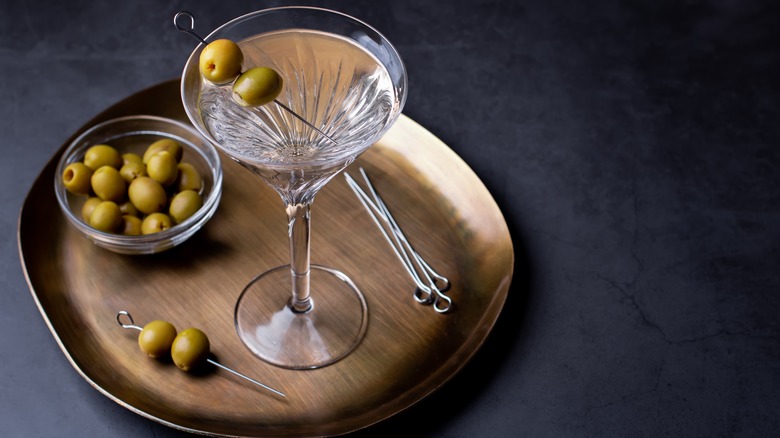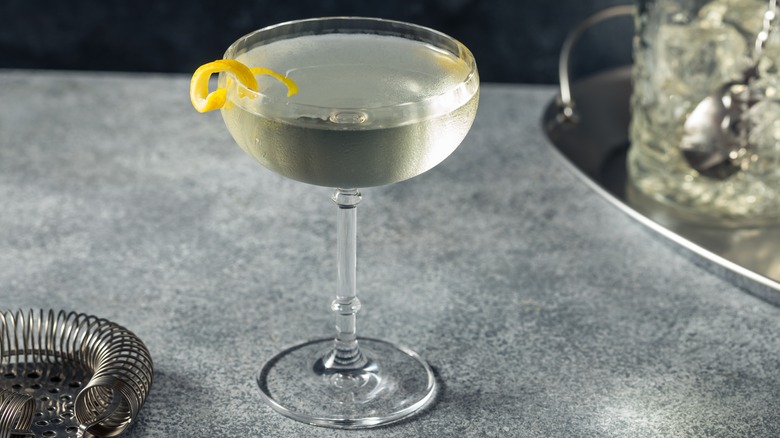Does The Type Of Glass You Serve A Martini In Matter?
There is no drink on earth quite like the martini, not only in flavor, but in style. An ice cold martini served in its sleek glass gives off an air of sophistication, elegance, and timelessness, thanks to its popularity with one of the most distinguished film characters of all time, James Bond. The method to producing the "perfect" martini is so subjective and varied, that most connoisseurs have agreed to disagree on the matter. While one insists a true martini be dry, stirred, and made with gin, another staunchly disagrees, insisting that their shaken, vodka martini with plenty of vermouth is what makes it sublime.
The origin of the classic dry, gin martini is complicated and varied, but some believe the cocktail began to take form in the late 1800s, per Difford's Guide. Meanwhile, Vinepair suggests it wasn't until the 1920s, when the gin martini blossomed into popularity. As for its stemware, the beverage was likely served in champagne coupes until the surfacing of the iconic, long-stemmed, conical glass in 1925 in Paris.
It's been argued that different alcoholic beverages belong in specific glassware for maximum flavor and enjoyment. For example, red wine glasses are designed with large, round bowls to maximize air and aroma. But do the same rules apply to martinis?
Is it a martini without its glass?
It's tough to imagine a martini served in a margarita glass or a long Collins glass. It would appear ... just wrong. Slurrp agrees, suggesting that the appearance of a martini is just as important as how it tastes. The sleek, attractive glass oozes fine taste and distinction. The glass is also designed to keep the contents from becoming too warm. Served (and best enjoyed) ice-cold, imbibers are expected to hold the glass by its long stem to keep any body heat from transferring to the liquid itself.
Vinepair explains that the martini glass was thought to be designed with a wide mouth in order to expose the cocktail to as much air as possible, or possibly offer prohibition-era bartenders the chance to swiftly dump the glass' contents should the police raid their establishment. And anyone who enjoys any kind of 'tini knows a swift tilt of the glass causes the contents to pour out everywhere.
As synonymous as martinis are with their glasses, Vinepair suggests modern bartenders and mixologists are beginning to bring back the coupe as their martini vessel of choice, as well as Nick & Nora glasses. Both styles of stemware spill less easily than the martini glass and look quite attractive with a spear of olives laying on top or a twist of lemon lounging over the rim.

